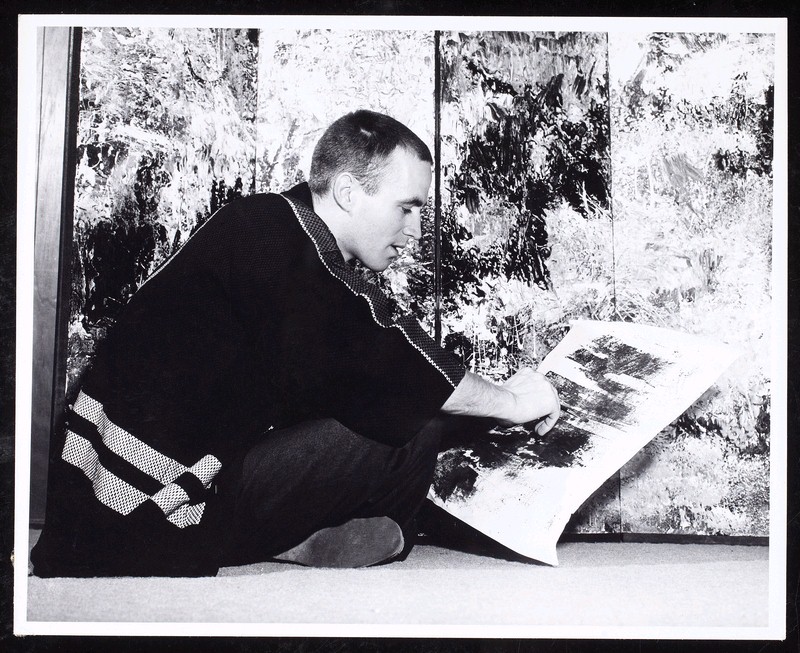IAIN BAXTER&: Dialectics of Absolute Identity [Part 2]
Posted: August 9, 2012IAIN BAXTER&:
Dialectics of Absolute Identity
[Part 2]
David Bellman
CAUSA
__________
On 6 August 1945, C. D. Howe,
Department of Munitions and
Supply, Government of Canada,
introduced the Anglo-Canadian-
American Atomic Bomb Project
in the following statement:
“It is a distinct pleasure for me to announce that
Canadian scientists have played an intimate part,
and have been associated in an effective
way with this great scientific development.”
Fifteen years after the Hiroshima
announcement, Iain Baxter wrote
an application for a Japanese
Government scholarship, observing:
“What with materialism becoming the forerunner
of our every action, the people of Canada need to
understand and appreciate forms of nature and their
tremendous impact upon our lives.”
__________
“What we have to find … is some touchstone outside of the individual peculiarities of human beings, and the only touchstone which exists is nature. And by nature we mean the whole organic process of life and movement which goes on in the universe, a process which includes man, but is indifferent to his generic idiosyncracies.”
– Herbert Read (1945)
77-Log Bridge, Nitobe Japanese Garden, University of British Columbia.
Photo: M. Cynog Evans, 6 August 2012.
This confidently constructed garden feature functions as a symbol of Nitobe Inazo (1862-1933), a Japanese educator and diplomat, who had aspired to being a “bridge over the Pacific”. Nitobe Garden opened in 1960, immediately prior to Iain Baxter’s arrival in Japan (where he first developed his career as a professional artist).
__________
“Slumbering in the dream land,
talking about the dream,
why not float our dream
on the stream of eternity.”
Ryokan (1758-1831)
__________
Iain Baxter Notebook [Notes on Japan, Kyoto, 1961]
“…looking closely at things is something
which has to be learned.”
Marguerite Duras, script excerpt from Alain
Resnais’s film Hiroshima mon amour (1959)
Shoji screen (in Baxter’s Kyoto apartment) painted with sumi-e ink and
mop. Contemporaneously, following expert instruction, the artist had
realized an innovative series of “byobu” (portable room dividers used
in traditional Japanese dwellings). Highly unconventional, these
experiments were constructed with both wood veneer and car lacquer.
__________
“Perhaps he created byobu for himself out of that
world where the triptych, the cyclorama (not to
mention Cinerama) and the mobile established
themselves. Perhaps it was only natural for him
to have found such a format with his highly flexible
and fluent style of art. But from the Japanese point
of view, from within the tradition, it is startling and
refreshing, showing us possibilities that we hadn’t
imagined, heretofore, existed. In any event, the
folding screen has at once become a new painting
ground, a ground that can metamorphose before
our eyes and transform our view of what a painting
may be in terms of that view.”
Teruo Ueno (Tokyo, 1962)
__________
YES, BUT ON THE OTHER HAND, NO.
NO, BUT ON THE OTHER HAND, YES.
[Posted: 4:25 GMT, 9 August 2012]
__________
“The mind and the word are equally being-time. Their reaching and not-reaching alike are being-time. Even when the time of their reaching is not yet over, the time of their not-reaching is come.”
Dogen (1240)


![Iain Baxter Notebook [Notes on Japan, Kyoto, 1961]](images/notebook2.jpg)
![Iain Baxter Notebook [Notes on Japan, Kyoto, 1961]](images/byobu1.jpg)
